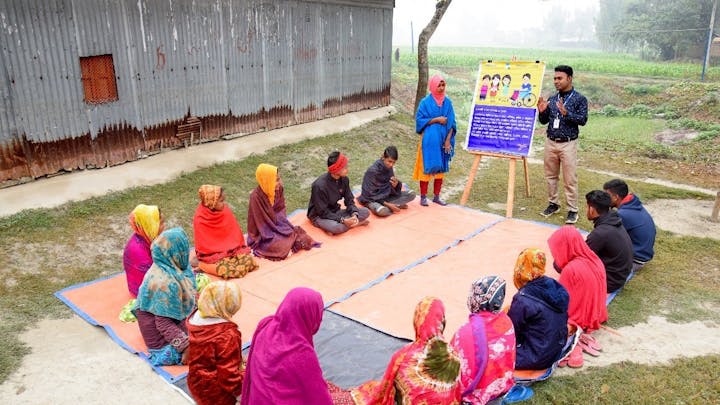The importance of Participatory Evaluation

Creating impactful programs
How can organizations ensure that their programs truly address the concerns and priorities of those who they aim to support? Participatory evaluation is a tool increasingly used in the development sector to improve the effectiveness and impact of development programs.
Effective evaluation goes beyond numbers; it is about understanding the experiences of those impacted by the program. In order to do so, the voices of those affected by the program need to be included in the evaluation process.
This blog is a follow up on our previous post about community participation and the concept of PPMEL. We will continue to build on these by diving deeper into the relevance of PPMEL (Participatory Planning, Monitoring, Evaluation and Learning) for organizations and how it can be implemented successfully.
Why is PPMEL important within organizations?
Traditional evaluation methods are increasingly being criticized for excluding the voices of those who are most affected by the programs that are being evaluated. Over the past few decades, PPMEL has been gaining traction as a response to this critique.
Participatory evaluation is essentially based on the idea that the voices of those who are affected by the program should be actively involved in the evaluation process. This ensures that their knowledge, perspectives and experiences are central in the evaluation process.
Participatory evaluation prioritizes inclusivity and collaboration, and fosters the empowerment of those involved in the program.
By using this approach, the relevance of the evaluation is enhanced for several reasons.
First, relevant contextual, cultural and local factors are included in the evaluation. When those affected by the program are not included in the evaluation, these factors might be overlooked.
Secondly, participatory evaluation aims to include the voices of those who are often marginalized. This ensures that their concerns and priorities are not overlooked, which enhances the relevance of the evaluation for all stakeholders. At the same time, this also empowers these marginalized groups as programs will be tailored to address their concerns.
Lastly, including all voices builds trust between those implementing the program and those who are affected by the program. Overall, participatory evaluation ensures that programs are relevant, impactful, and adapted to the concerns and priorities of those it aims to support. In doing so, it improves the outcomes of the program.
How can PPMEL be implemented within a program?
There are a series of steps involved in the implementation of participatory evaluation. These steps are designed to engage all relevant stakeholders in every stage of the evaluation process.
In general, the steps involve the identification and engagement of all relevant stakeholders, leading to the collaborative planning of the evaluation process. This is followed by the data collection and analysis of the data. The results are reported and shared with the stakeholders. Based on the results, new action plans are developed.
The following whitepaper sets out a detailed description of all the steps that need to be followed when performing participatory evaluation.
When implementing participatory evaluation, it is important to keep in mind that participatory evaluation is grounded on several core principles: inclusivity, empowerment, transparency, a focus on utilization, and adaptability.
These principles are essential for creating relevant, accurate, and actionable evaluations. By adhering to these principles, the evaluation process contributes to the empowerment of all stakeholders, ultimately leading to more effective and sustainable programs.
What kind of support can Wilde Ganzen offer you?
Wilde Ganzen can support your organization in implementing participatory evaluation by providing tools and resources, such as training materials, guidelines, and best practices.
Wilde Ganzen organizes online learning circles on participatory evaluation. In addition, Wilde Ganzen can help facilitate partnerships with other organizations and funders to strengthen the evaluation efforts and to further enhance the impact of partner organizations.
In conclusion, incorporating participatory evaluation into an organization’s processes is a powerful way to ensure that programs truly reflect the concerns and priorities of those they aim to support.
By engaging all stakeholders in meaningful ways, organizations not only enhance the relevance and impact of their programs, but also foster empowerment and build trust with those they aim to support. Participatory evaluation is therefore not just a method for evaluation, but a pathway to more inclusive, sustainable and transformative programs.
